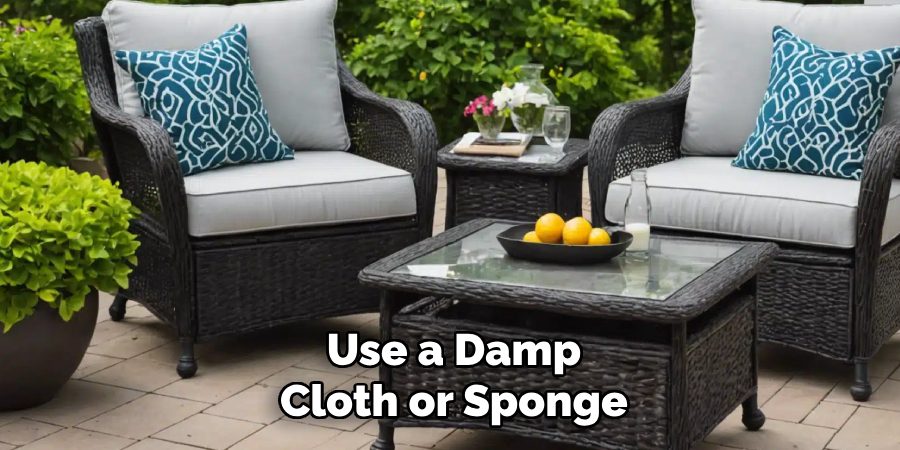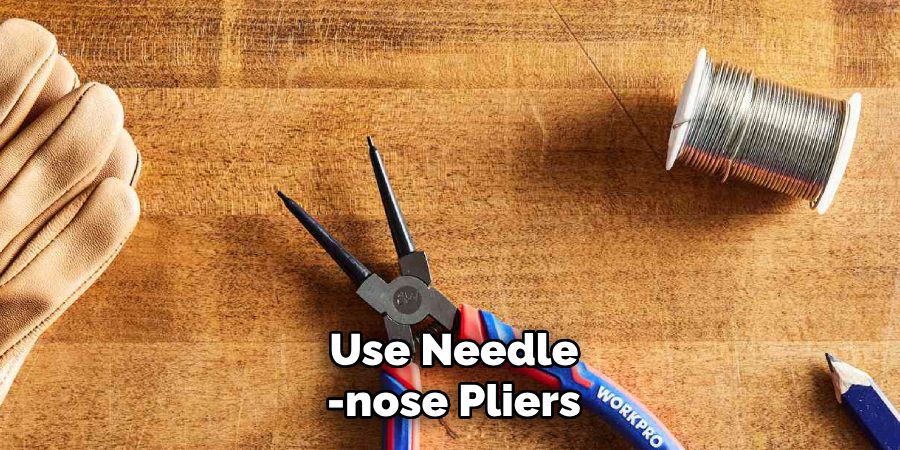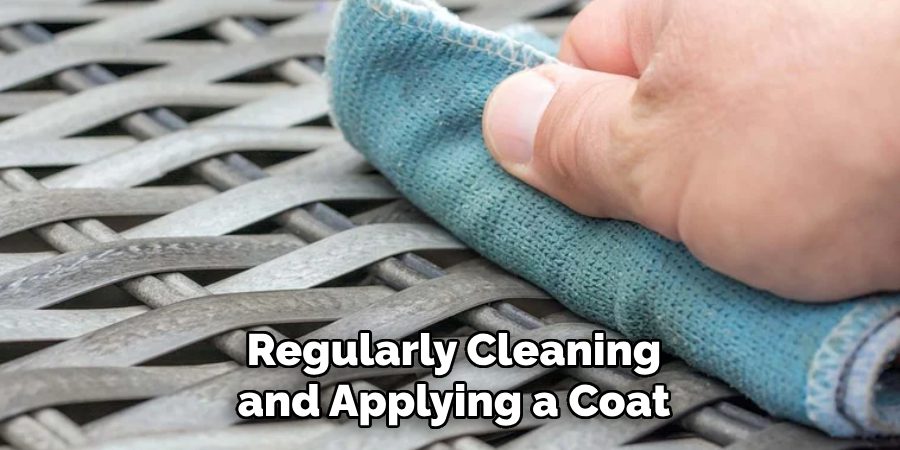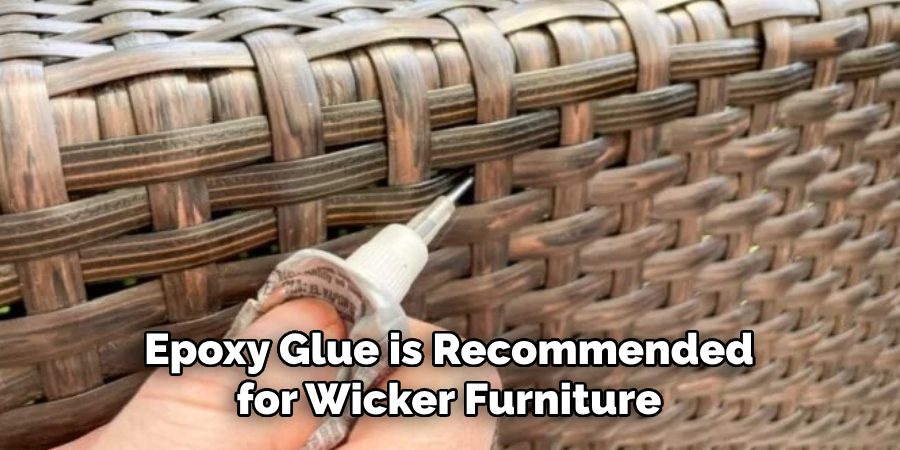Wicker patio furniture is a popular choice for outdoor spaces due to its classic look and durability. However, over time, exposure to the elements can cause wear and tear, leading to cracks, unraveling, or discoloration. Fortunately, with the right tools and techniques, you can restore your wicker furniture and extend its life.

This guide on how to fix wicker patio furniture will walk you through the steps to fix common issues, ensuring your furniture remains both functional and beautiful.
Why Fix Instead of Replacing?
Before diving into the steps to fix wicker patio furniture, it’s essential to understand why repairing it is a better option than simply replacing it. Firstly, wicker furniture can be expensive to replace, especially if you have multiple pieces that require fixing. Repairing your current furniture will save you money in the long run.
Additionally, there is a sense of satisfaction and accomplishment in restoring something rather than throwing it away. Wicker furniture also has sentimental value, especially if it has been passed down through generations. By repairing it, you can keep this treasured item in your family for years to come.
Tools and Materials You’ll Need
To fix wicker patio furniture, you will need the following tools and materials:
- Fine-grit Sandpaper
- Scissors or Wire Cutters
- Epoxy Glue or Wood Glue
- New Wicker Strands or Rattan Cane
- Needle-nose Pliers
- Small Paintbrush
- Masking Tape
- Damp Cloth or Sponge
6 Simple Step-by-step Guidelines on How to Fix Wicker Patio Furniture
Step 1: Prepare the Furniture
Before starting any repairs, it’s important to prepare the wicker furniture properly. Begin by cleaning the furniture thoroughly to remove dirt, dust, and debris. Use a damp cloth or sponge to wipe down all surfaces, paying close attention to crevices where debris may be trapped.

If the furniture is especially dirty, use a mild soap mixed with warm water to clean it, then rinse with a damp cloth and allow it to dry completely. Inspect the furniture carefully to identify problem areas, including broken or loose strands, cracks, or other signs of damage. This step ensures you are working with a clean surface and have a clear understanding of the repairs needed.
Step 2: Sanding
Once the furniture is clean and dry, the next step is to sand down any rough or damaged areas. Use fine-grit sandpaper to gently smooth out splintered or cracked sections of the wicker. Sanding helps to remove any sharp edges and creates a smooth surface for applying glue or weaving new wicker strands. Be sure to sand lightly to avoid damaging the surrounding wicker.
After sanding, wipe down the area with a damp cloth to remove any dust or debris before moving on to the next step.
Step 3: Fixing Broken or Loose Strands
One of the most common issues with wicker furniture is broken or loose strands. To fix this, you will need to replace the damaged strands with new ones. Begin by cutting off a piece of new wicker strand that is slightly longer than the damaged one using scissors or wire cutters.
Next, apply some epoxy glue or wood glue to the end of the new strand and carefully weave it in place, following the same pattern as the surrounding wicker. Use needle-nose pliers to hold the new strand in place until it dries. Repeat this process for any other broken or loose strands.
Step 4: Repairing Cracks
If your wicker furniture has cracks, you can fix them by applying a small amount of glue to the affected area. Use needle-nose pliers to gently push the crack back together, then use masking tape to hold it in place while the glue dries. Once dry, remove the tape and lightly sand down any excess dried glue for a smooth finish.

You can also use a rattan cane or new wicker strand to reinforce the inside of the crack for added strength. Simply weave it in place and secure it with glue before allowing it to dry.
Step 5: Touching Up with Paint
After completing the repairs, it’s time to restore the appearance of your wicker furniture by touching up the paint. Start by selecting a paint color that matches the original finish of the furniture. For best results, use spray paint designed specifically for wicker or outdoor furniture, as it ensures smooth and even coverage.
Before painting, place a drop cloth or newspaper beneath the furniture to protect the surrounding area. Shake the spray paint can thoroughly and hold it about 8-10 inches away from the surface as you apply a light, even coat. Allow the first coat to dry completely before applying a second one, if needed, to ensure full coverage.
If you notice small areas that need detailed touch-ups, use a small paintbrush to carefully paint those spots. Once the furniture is completely dry, inspect it to ensure the paint job is even and seamless. This step will not only enhance the aesthetic appeal but also protect the wicker from future wear and tear.
Step 6: Protecting the Furniture
To ensure your wicker furniture stays in good condition for as long as possible, it’s important to take preventative measures. If you live in a humid or rainy climate, consider storing your furniture indoors during inclement weather. You can also invest in waterproof covers to protect it when not in use.
Regularly cleaning and applying a coat of outdoor furniture wax can also help protect against sun damage and prolong the life of your wicker furniture.

Following these simple steps on how to fix wicker patio furniture will help you fix your wicker patio furniture and keep it looking beautiful for years to come. Remember, repairing wicker instead of replacing it not only saves you money but also allows you to preserve valuable memories and maintain a sustainable lifestyle. With a little patience and the right tools, you can easily tackle any wicker furniture repair. Happy fixing!
Do You Need to Use Professionals?
While repairing wicker patio furniture is a task that many can handle with the right tools and guidance, there are instances where hiring a professional may be worth considering. If the damage to your furniture is extensive, such as large structural breaks or severely deteriorated wicker, a professional repair service can provide expertise and ensure high-quality results. Additionally, intricate or antique pieces may require specialized care to preserve their value and craftsmanship, which professionals are better equipped to handle.
Using a professional may save you time, especially if you’re unfamiliar with wicker repair techniques or lack the necessary tools. Many repair services also offer additional restoration options, like refinishing and reinforcing the furniture, for longevity. However, professional repairs typically come with a price, so it’s essential to weigh the cost against the sentimental or monetary value of the furniture. If you feel confident in your abilities and the damage is minor, a DIY approach is often sufficient. For major repairs or priceless heirlooms, consulting a professional is a smart investment.
Preventing Future Damage: Maintenance Tips
Once your wicker patio furniture is fully repaired and restored, regular maintenance can help prevent future damage and keep it looking its best. Here are a few simple tips to follow:
- Regularly clean the furniture using a mild soap or detergent and water. Avoid harsh chemicals or abrasive cleaners that can damage the wicker.
- Keep your furniture covered when not in use to protect it from rain, sun, and other outdoor elements.
- Avoid placing heavy objects on top of the furniture, as this can cause structural damage over time.
- Perform regular checks for any signs of damage or wear and tear and address them promptly before they worsen.
By following these maintenance tips, you can ensure your wicker patio furniture remains in excellent condition for years to come. Remember, a little care goes a long way in preserving the beauty and functionality of your wicker furniture.
Frequently Asked Questions
Q: Can I Fix Wicker Furniture if the Strands Are Completely Broken Off?
A: Yes, you can repair wicker furniture even if the strands are broken off. You will need to purchase new wicker strands and use epoxy or wood glue to weave them in place. It is best to consult a professional if you are unsure of the exact weaving pattern.
Q: How Long Does the Repair Process Take?
A: The repair process can vary in time, depending on the extent of damage and your skill level. However, with proper preparation and focus, it should take no longer than a few hours.
Q: Can I Use Regular Wood Glue Instead of Epoxy Glue?
A: Epoxy glue is recommended for wicker furniture repairs as it has excellent bonding properties and is waterproof. HWoodglue can also be used but may not provide the same durability or resistance to moisture.

Q: Is There Any Maintenance Required After Repairs?
A: Regularly clean and protect your wicker furniture with outdoor furniture wax or a protective sealant to prevent future damage. Storing the furniture indoors during harsh weather conditions can also help prolong its lifespan.
Q: Can I Paint Wicker Furniture Any Color?
A: While you can paint wicker furniture any color, it is best to choose a color that complements the natural look and feel of wicker. Additionally, using spray paint designed for outdoor furniture or wicker will ensure a smoother and more even coverage.
Conclusion
Wicker patio furniture is a timeless and charming addition to any outdoor space, but like all things, it requires care and occasional repairs to maintain its appeal. By following the straightforward steps on how to fix wicker patio furniture outlined above, you can effectively restore your wicker furniture to its former glory, extending its life and ensuring it remains a functional and beautiful part of your home.
Taking the time to repair and protect your wicker not only highlights the benefits of sustainable living but also preserves the sentimental and practical value of each piece. With proper maintenance and a little effort, your wicker furniture can continue to bring comfort and style to your patio for many years to come.
Professional Focus:
Arden Bernier is dedicated to exploring and advancing patio design and maintenance, combining practical knowledge with innovative solutions. Specializing in outdoor living spaces, he provides expert advice on patio fixes, landscaping, and sustainable outdoor design. With a focus on creating functional, aesthetic, and durable outdoor environments, Arden empowers homeowners to transform their patios into beautiful and relaxing retreats.
Vision:
To inspire and assist homeowners in creating functional, aesthetically pleasing outdoor spaces. Arden encourages creativity and practical problem-solving in patio design, making outdoor living more accessible and enjoyable for everyone.
Education:
- Bachelor of Arts (BA) in Environmental Design – University of California, Berkeley.
- Master of Science (MS) in Landscape Architecture – University of Southern California.
- Specialized training in sustainable landscape design, outdoor space planning, and eco-friendly materials.
Recognition:
- Author at PatioFixes.com, providing expert advice on patio maintenance and design.
- Featured in online platforms and home improvement blogs for valuable tips on patio fixes and outdoor living.
- Recognized for his contributions to making outdoor spaces more eco-friendly and sustainable.
Expertise:
Patio expert with a focus on creating functional, beautiful, and durable outdoor living spaces. Specialization includes:
- Patio design and construction
- Outdoor furniture and décor
- Landscaping and sustainable patio solutions
- Outdoor maintenance and repair techniques
